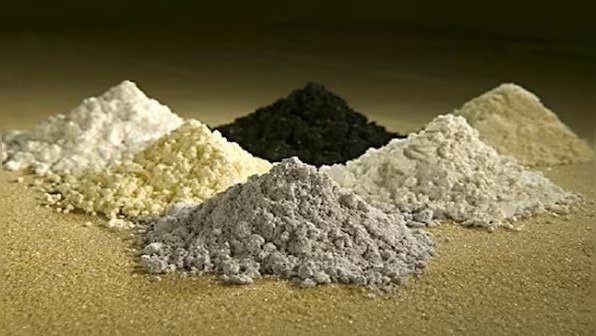New Delhi’s strategic leap in rare earths; from beach sands to global supply chains
India on ‘magnet mission’, ramps up rare earths for EVs and defense; loosens China’s tightening control over global supplies of critical minerals

India is accelerating its transition into a major global player in rare earth elements (REEs), driven by rising geopolitical tensions, China’s tightening control over global supplies, and the surging demand for critical minerals in sectors like electric vehicles (EVs), defense, and renewable energy.
With China still controlling 90% of the rare earth magnet market, its recent export restrictions on terbium and dysprosium have intensified global efforts to diversify supply chains.
India, home to the third-largest REE reserves globally (6.9 million tons) and 35% of the world’s beach and sand mineral deposits, is stepping forward.
Though India’s REE mining output was modest — just 2,900 tons between 2012 and 2024 — the tide is turning. Policy shifts now allow private exploration of non-radioactive REEs, breaking away from the state monopoly enforced by the Atomic Energy Act of 1962. The 2023 update to the Mines and Minerals Act, along with capital subsidies and joint ventures, is encouraging private-sector participation and scaling.
India’s rare earth magnet demand surged from 12,400 tons in FY21 to nearly 54,000 tons in FY25, with market value projected to hit $993 million by 2033.
A ₹3,500–5,000 crore Production-Linked Incentive (PLI) scheme is in the works, targeting 1,500 tons in annual magnet production. Already, 13 mineral blocks have been auctioned for rare earth mining.
Globally, India is forging ties to secure critical minerals. The India–Australia Critical Minerals Partnership promotes joint investments and research, with support from the Quad and strategic cooperation frameworks. Domestically, the 2025 launch of the National Critical Mineral Mission (NCMM) aims to complete 1,200 exploration projects by 2030–31.
Indian Rare Earths Limited (IREL), under the Department of Atomic Energy, is central to this transformation. Its Odisha-based Rare Earth Extraction Plant posted record outputs in FY24, and its Visakhapatnam and Bhopal units are now producing magnets under testing by top institutions.
While environmental clearances and bureaucratic hurdles persist, India’s determination to unlock its mineral potential is clear. With deep reserves, international partnerships, and bold reforms, India is poised to evolve from a dormant resource holder to a key global supplier of rare earths and critical materials.













